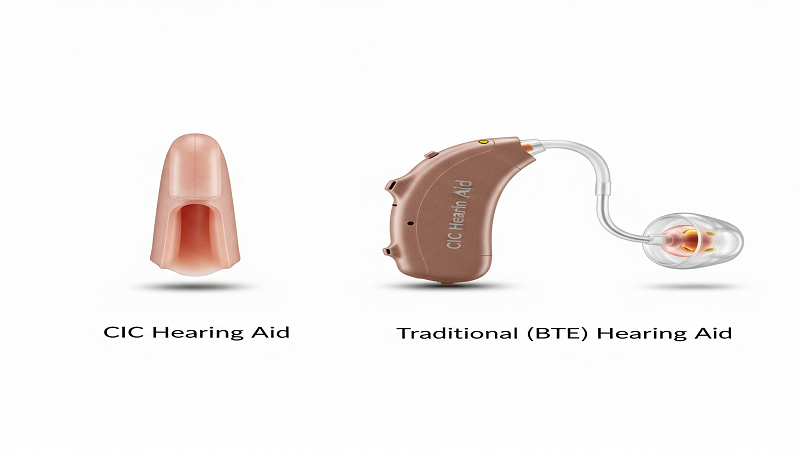Two models of hearing aids exist: completely-in-canal and older ones like behind-the-ear or receiver-in-canal. CIC models are valued for their discretion, staying entirely inside the ear canal. Older models are still larger but offer more power, features, and convenience. One should understand how these options differ in design, performance, comfort, and maintenance before deciding which hearing solution best meets individual hearing needs and lifestyle.
Performance and Power
Traditional styles like behind-the-ear or receiver-in-canal continue to provide more powerful amplification, the better for severe loss. CIC hearing aids are appropriate for mild to moderate hearing loss. The pace of development is, however, slowly closing this gap, and most CIC hearing aid options now have high-level processing technologies. This provides the wearer with discretion as well as superior performance in a very small package.
Discreet Design vs. Visibility
Fully-in-canal hearing aids, or CIC, are the most unobtrusive option today. They are seated entirely within the ear canal and are barely visible on a day-to-day basis. Traditional hearing aids, especially behind-the-ear ones, are more noticeable but are generally more fittingly adaptable. Stealth versus visibility is typically the place to start for most patients.
Comfort and Fit
CIC aids are molded to the ear canal individually and fit closely without shifting. A few users, however, find discomfort due to extended wear due to deep insertion. Traditional models rest partly outside the ear, putting pressure differently and not irritating on extended wear. Small ear canal individuals may find custom CIC molds restrictive on prolonged wear.
Maintenance and Durability
CICs reside low in the ear, exposing them to moisture and wax. This location requires frequent cleaning and more gentle maintenance to ensure functionality. Traditional products are easier to use, replace filters, and cope with replacement batteries. The design also keeps sensitive components farther away from moisture, making them more resilient. Your willingness to manage maintenance should determine your choice.
Technology Features
Due to space limitations, CIC models provide fewer accommodations like Bluetooth streaming or directional microphones. Standard models have more sizeable casings to support wireless connectivity, rechargeable batteries, and noise reduction. Standard models provide far greater accommodation for patients who have streaming phone calls, music, or TV as a necessary requirement. However, patients who are keen on being inconspicuous can endure smaller feature sets for the sake of stealth.
Cost Considerations
CIC units are particularly engineered to be more expensive than traditional units. Traditional hearing aids are very extensive in nature, covering cost to technology, and features available. Cost-conscious patients with performance demands can settle for mid-level traditional options, which can end up being more affordable while utilizing cutting-edge technology. Costs considered should be the device, normal maintenance, and repairs.
Lifestyle Alignment
Active individuals sometimes favor traditional models as they are more stable while moving. Athletes or builders value hearing aids that are sensitive to sweat and different conditions. Even discreet and water resistant, CIC models would become impractical in highly active or wet conditions. Understanding personal lifestyle needs helps to narrow the choice before making a judgment on cosmetic alone.
Choosing between CIC and conventional hearing aids is balancing looks, performance, comfort, and lifestyle. CIC aids are inconspicuous but do not have power or advanced features, while conventional ones have strength, toughness, and connectivity. Either option is appropriate based on the severity of hearing loss and patient needs. Regular hearing tests are also needed, as adjustments or technology improvement might be necessary as hearing changes with age.

